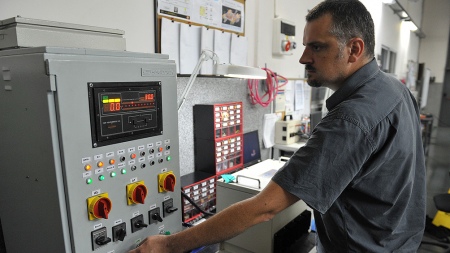The utilization of the installed capacity (UCI) of the industry stood at 66.7% in October, 2.4 points above the 64.3% obtained in the same month last yearreported this Wednesday the National Institute of Statistics and Censuses (Indec).
Meanwhile, andhe level of the tenth month of the year was 1.9 points below the 68.6% reached last Septemberadded the statistical agency.
industry by industry
The sectoral blocks that presented levels of use of installed capacity above the general level in October were basic metal industries (89.6%), non-metallic mineral products (79.8%), paper and cardboard (75.2%), petroleum refining (72.4%) and chemical substances and products (71.3%).
In contrast, those that were below the general level were food and beverage products (62.5%), the automotive industry (62.3%), tobacco products (57.5%), rubber and plastic products (56, 9%), publishing and printing (56.2%), metalworking except automotive (54.8%) and textile products (53.0%).
Thus, The variation in the UCI in October was in line with the level of industry activity, which increased 3.5% year-on-year but fell 1.1% compared to September.
In the accumulated of the first ten months of the year, the industry has a growth of 5.7%.
Days ago, The Secretary for Industry and Productive Development, José Ignacio de Mendiguren, affirmed that “even with the difficulties we have, activity and employment are not only sustained but also show clear signs of growth.”
He added that this “is not by chance, but is the result of a determined public policy of alliance with production and work and a clear course, which is the change of the productive structure of the country.”
The industry reached in recent months maximum levels of employment and production in the comparison of the last four and five years, respectively, according to a report prepared by the Center for Production Studies (CEPXXI).
On the basis of data from the Argentine Integrated Pension System (SIPA), the CEPXXI -which works under the orbit of the Ministry of Industry- indicated that in September the manufacturing sector exceeded 1,230,000 jobs, the highest of the last four years.
De Mendiguren also highlighted that the investment rate in the country “is the highest in the last ten years” at 22% of the Gross Domestic Product (GDP)which “means that it is a lie that one is in a terminal crisis.”
“Today, of the 24 provinces, 22 have almost full employment” and the key will be “maintaining this level of activity and investment,” added the official.
According to the report presented today by INDEC, in October 2022, compared to the same month in 2021, the main positive incidence was observed in chemical substances and products, which registered a UCI level of 71.3%, higher than that of the same month of the previous year (64.2%).
#DataINDEC
Industry: during October 2022, 66.7% of the installed capacity was used; 2.4 pp more than in October 2021 https://t.co/Tc8GKxv7hK pic.twitter.com/Iz8RFQk5YZ— INDEC Argentina (@INDECArgentina) December 14, 2022
The interannual growth of 7.1% in this sector was linked “to the higher levels of production of basic chemical products, plastic raw materials and agrochemicals”, the statistical agency specified.
For his part, the basic metal industries presented a level of utilization of the installed capacity of 89.6%, higher by 9.4 points than the one registered in the same month of the previous year (80.2%). According to data from the Argentine Steel Chamber, crude steel production rose 10.1% year-on-year in October.
Another data highlighted by INDEC was that the automotive industry showed a UCI of 62.3%, which meant an improvement of 11.5 points compared to October 2021 (50.8%), a result obtained “as a result of the greater number of units manufactured by automotive terminals”.
The indicator for the use of installed capacity in industry measures the proportion used, in percentage terms, of the productive capacity of the industrial sector. The survey of the official body includes a panel of between 600 and 700 companies.


















